In Bronze Age Cretan archaeology, the word “palace” is perhaps the first that comes to mind. The Minoan palaces are without a doubt the most striking and relevant constructions in the island's landscape. Traditionally, the existence of four palaces has been pointed out -Knossus, Festus, Malia and Zakros-, and although current research has confirmed the existence of many others (for example Petras, Gurnia, Glatas or Monastiraki to name just a few) without ruling out that more appear in the future, these –except the last one– are undoubtedly the largest and probably the ones that have had the most development throughout the long-lived Minoan period or, at least, in historiographical research up to the present day. And if talking about Minoan archeology means talking about palaces, mentioning these almost inadvertently leads us to Knossos, mainly because Knossos is the one that had the greatest continuity and was the only one that survived the destructions of the recent Minoan IB (ca . 1450 BC C). But it is not Knossos that we are going to talk about here, but the Palace of Festus , probably the second most emblematic site on the island, not because its palace is the largest or even the oldest, but because it represents, to date, the best source of information on the first palatial architecture of Crete. Let's get to it...
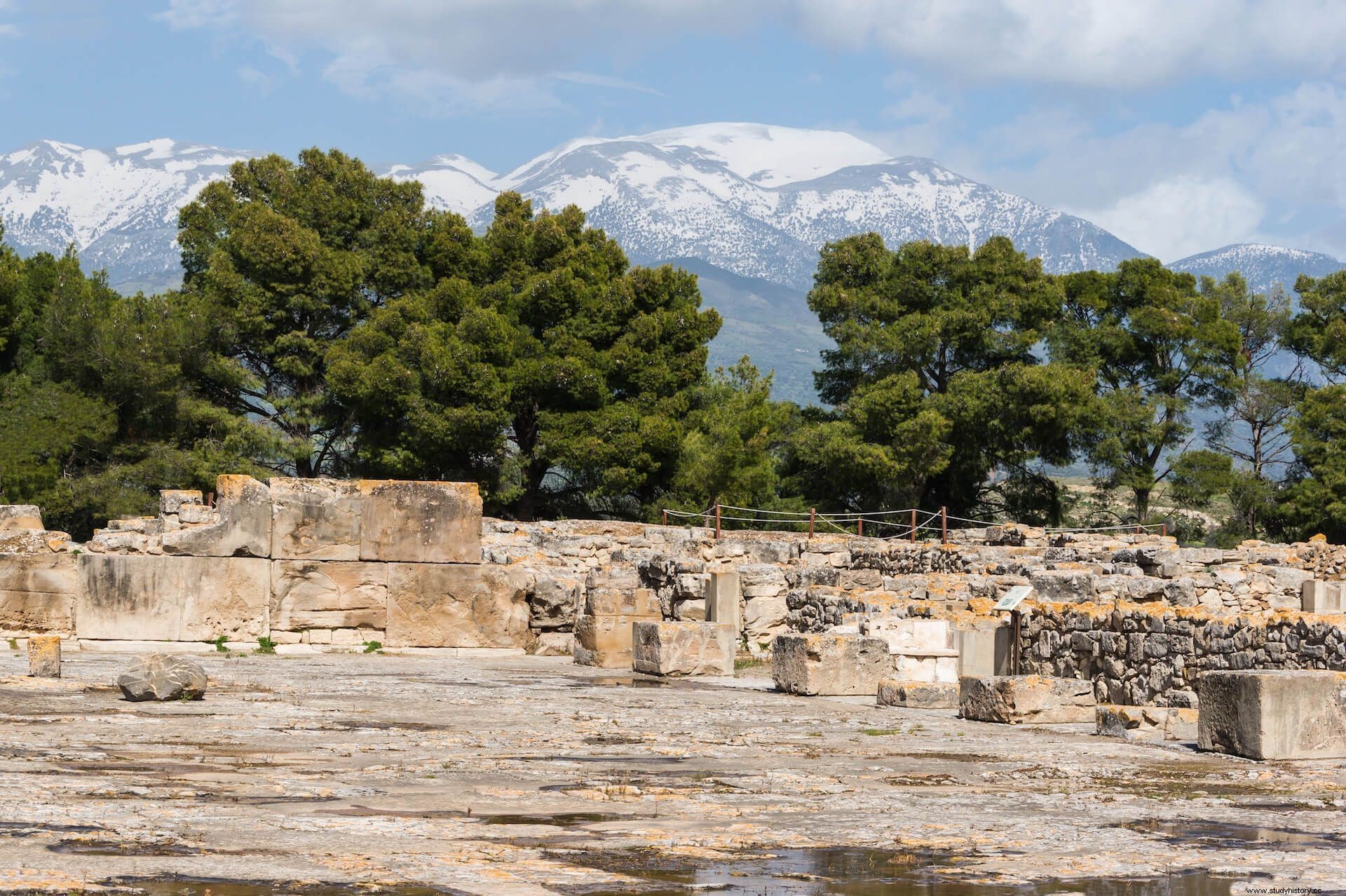
Of the three cities united under one metropolis by Minos , the third, called Festus, was razed to the ground by the Gortinians. It is situated six stadia from Gortyna, twenty from the sea and forty from the port of Matala, and its territory is governed by those who destroyed it (Strabo, Geography IV.14).
As on so many other occasions, Strabo's story mixes mythical facts that would be attributed to the Minoan era –according to legend, the first king of Festus would have been Radamantis, the brother of Minos– with others much later than the destruction of the last palace, but it is very useful to focus on the place where Festus was erected, since its location has a lot to do with its primacy in the region during the middle Minoan and the role it played in general in the history of the Minoan civilization . The palace of Festus is located in the plain of Mesara, one of the richest and most dynamic in the south of the island, and as Strabo rightly states, like Knossus, it did not have direct access to the sea, so it depended on other port or peripheral establishments such as Hagia Triada or Kommos to maintain commercial contact with the main cultures of the eastern Mediterranean, although it is disputed whether a condition of autarky or self-sufficiency could have existed in the initial period of the palace outside the maritime trade routes. As in Knossos, Malia or any other Minoan center with a "palace", we are not talking about an isolated structure located in the middle of an empty landscape, but about a large construction located in a prominent place in a more or less complex urban center.
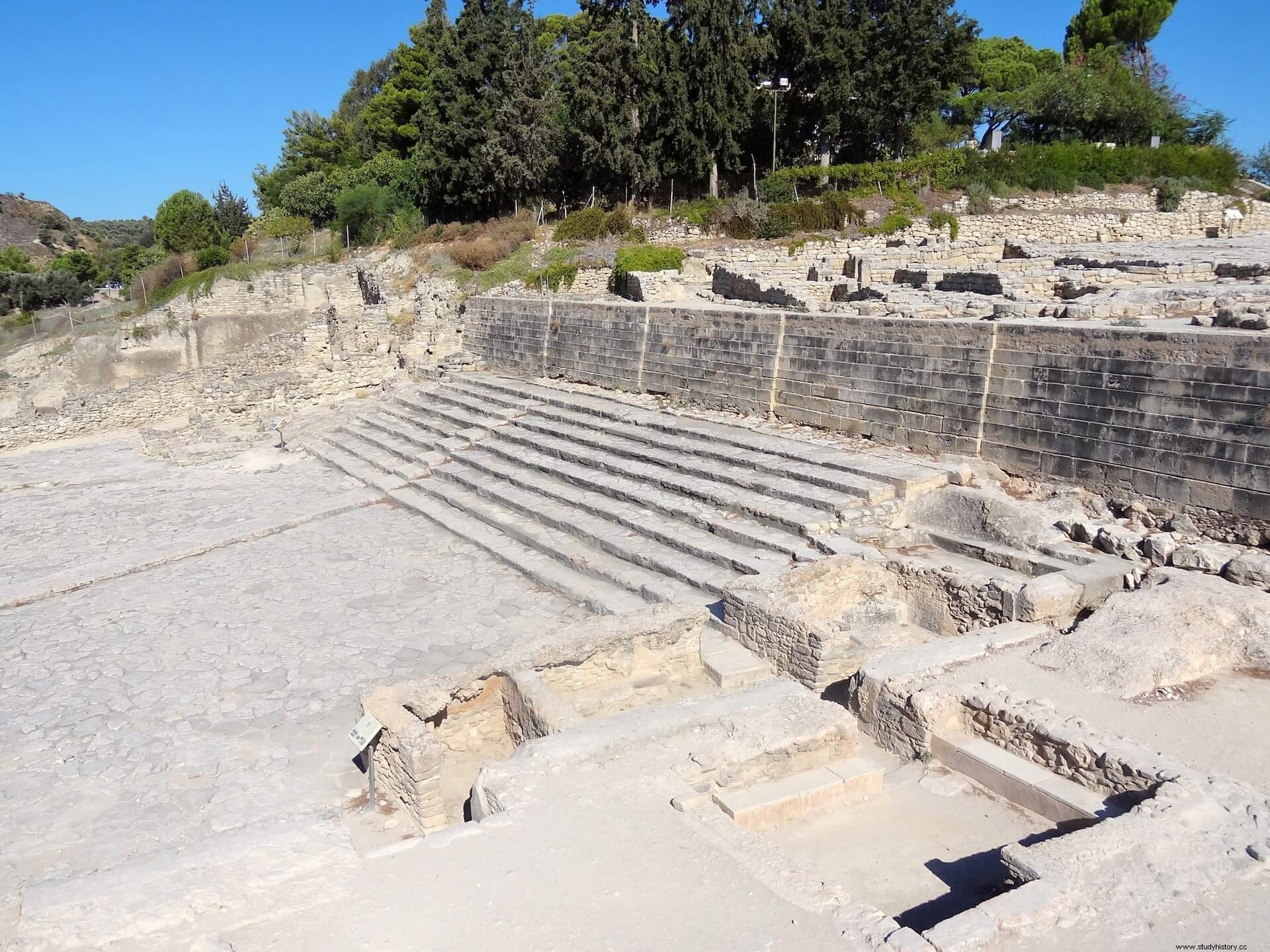
The origin of the palace of Festus , manifested in the so-called "old palace", dates back to the Protopalatial period (ca. 1900-1750 BC C.) although in the area there are remains of a settlement dated to the Final Neolithic (ca. 3600-3000 BC C.) of which several houses with rectangular floors with rounded corners have been documented, as well as different subsequent phases that took place throughout the Prepalatial period (ca . 3000-1900 BC C). Due to its monumentality, the palace is the space that has attracted the most attention from the archaeological work in the settlement, and although its initial excavation dates back to the beginning of the 20th century, other campaigns followed between 1928-1932, and 1950-1967.
The large palatial structure was built on the easternmost of the three hills that make up the settlement, perhaps for reasons of visibility on the plain. Almost without meaning to, anyone approaching the Mesara Plain would see the palace from a considerable distance. Dominant; huge in its dimensions; strikingly geometric in its design. The erection of such a monument, which denotes a certain degree of economic and social development, was probably related to the existence of an agricultural and livestock surplus together with the specialized production of ceramic and stone tableware, although the religious factor must not be ruled out, each once more clearly present in the interpretation of the meaning of the palaces in terms of their social and territorial articulation. Findings of imported Festus vases or local imitations of them alongside administrative documents as far afield as Monastiraki or Apolodou are evidence of the ancient palace's economic importance, or perhaps even political control over the area.

The structure of the palace It is made up from its origin of three terraces with their respective paved patios. The central courtyard –somewhat smaller than its equivalent at Knossos– is probably the one with the greatest symbolic meaning, as evidenced by the fact that it always appears in all palatial structures and that, it seems, articulates the volume of the buildings around it, but judging by the opinion of some experts, in the case of the palace of Festus, the western courtyard could have been the favorite place for ceremonial activities, since, on the one hand, it has a "theater area" equipped with steps in its north end and it has also been thought that the rooms in the northwest sector of the palace may correspond to a sanctuary.
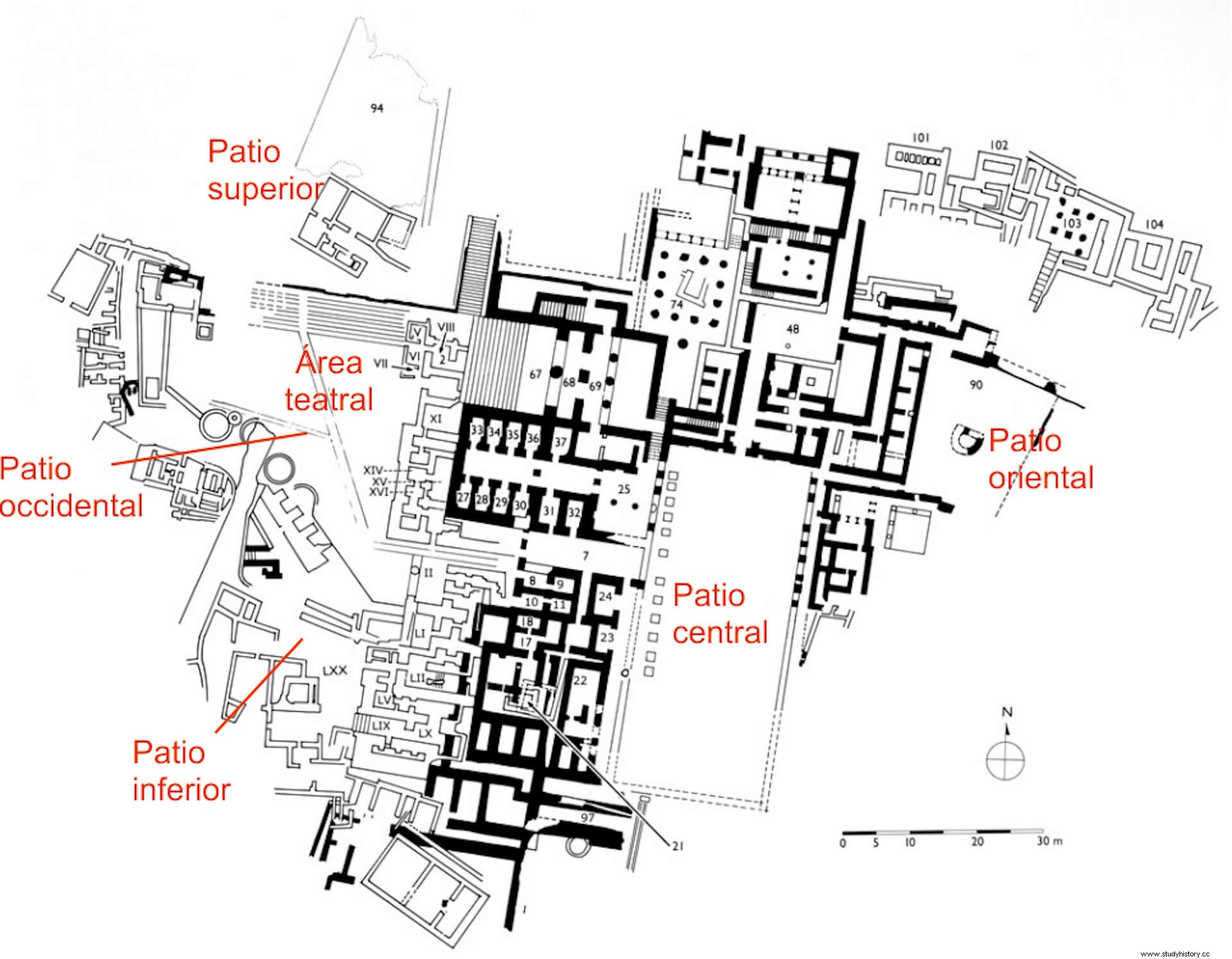
In addition, it is known that at an early stage there was in this place some betilos and, in the same way, the so-called kouloures also stand out in this patio , large underground circular structures that some researchers believe to be related to planters for sacred trees, although it is more likely that they were storage structures for grain. In any case, before reaching the heart of the palace, manifested in the great central courtyard, the first thing that attracts attention is the great western façade, built with large perfectly carved ashlars and mounted on a krepidoma (a leveling substructure).
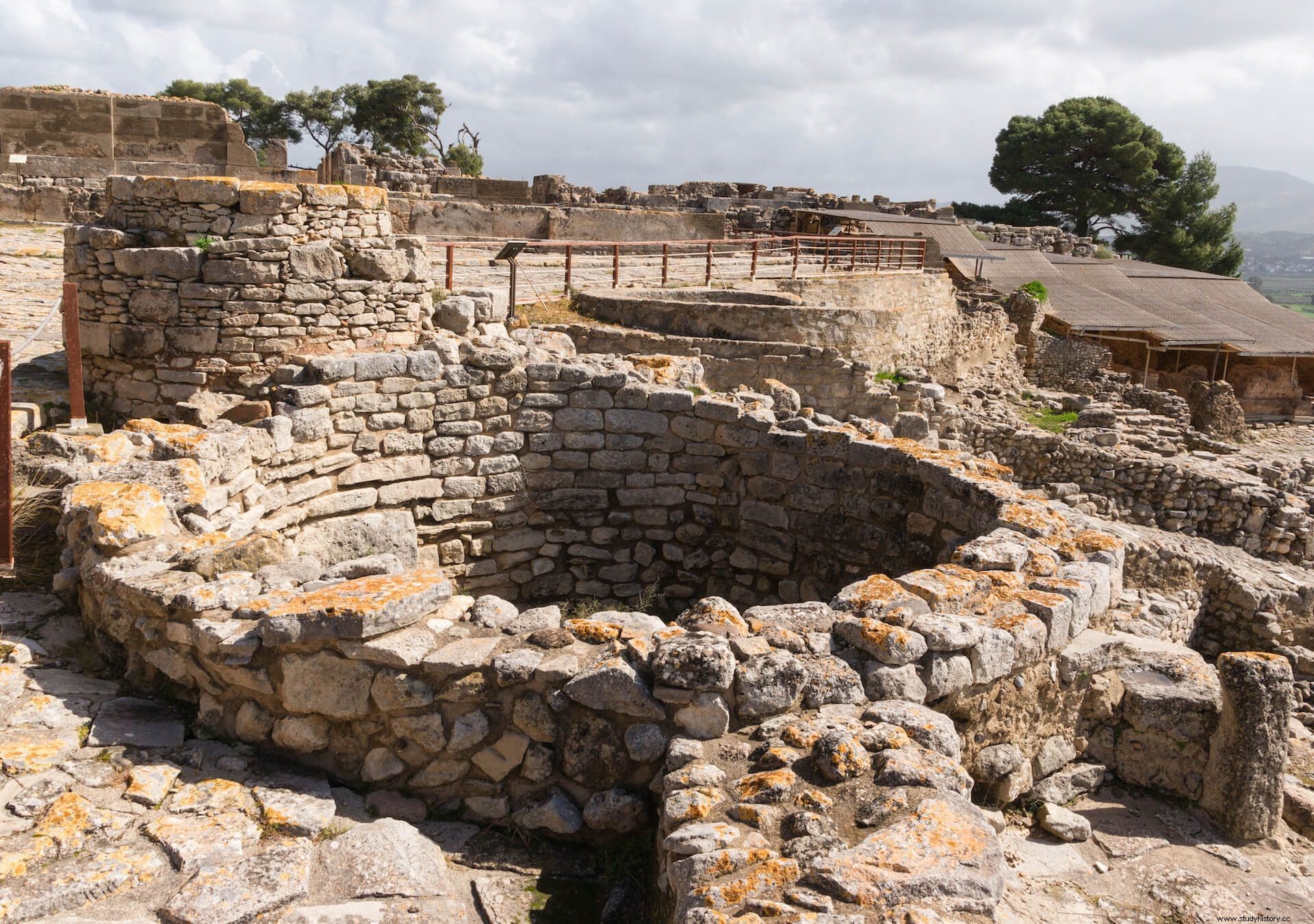
Behind this façade, the southwest wing consisted of three stories high, and the buildings were fitted with large windows facing the courtyard. The task of building several floors, calculating the thickness of the walls or transporting the wood for the structures and roofs must have been enormous as well as complex in its engineering, but beyond how surprising its proportions could have been for the Minoans of the unaccustomed to large structures, the Palace of Festus represents a true revolution in Minoan architecture. Some floors were paved with stone slabs, and the remains recovered on some walls indicate the presence of frescoes perhaps inspired by geometric patterns of textile materials such as carpets, highly valued in the Minoan world.
The main entry It was located, according to a common scheme in other palaces, in the western courtyard, and was produced through a raised walkway that led to a large open room with the only column on the entire façade. The walkway, as in Knossos, continued towards the interior of the palace, probably until reaching the central courtyard, whose floor was paved.
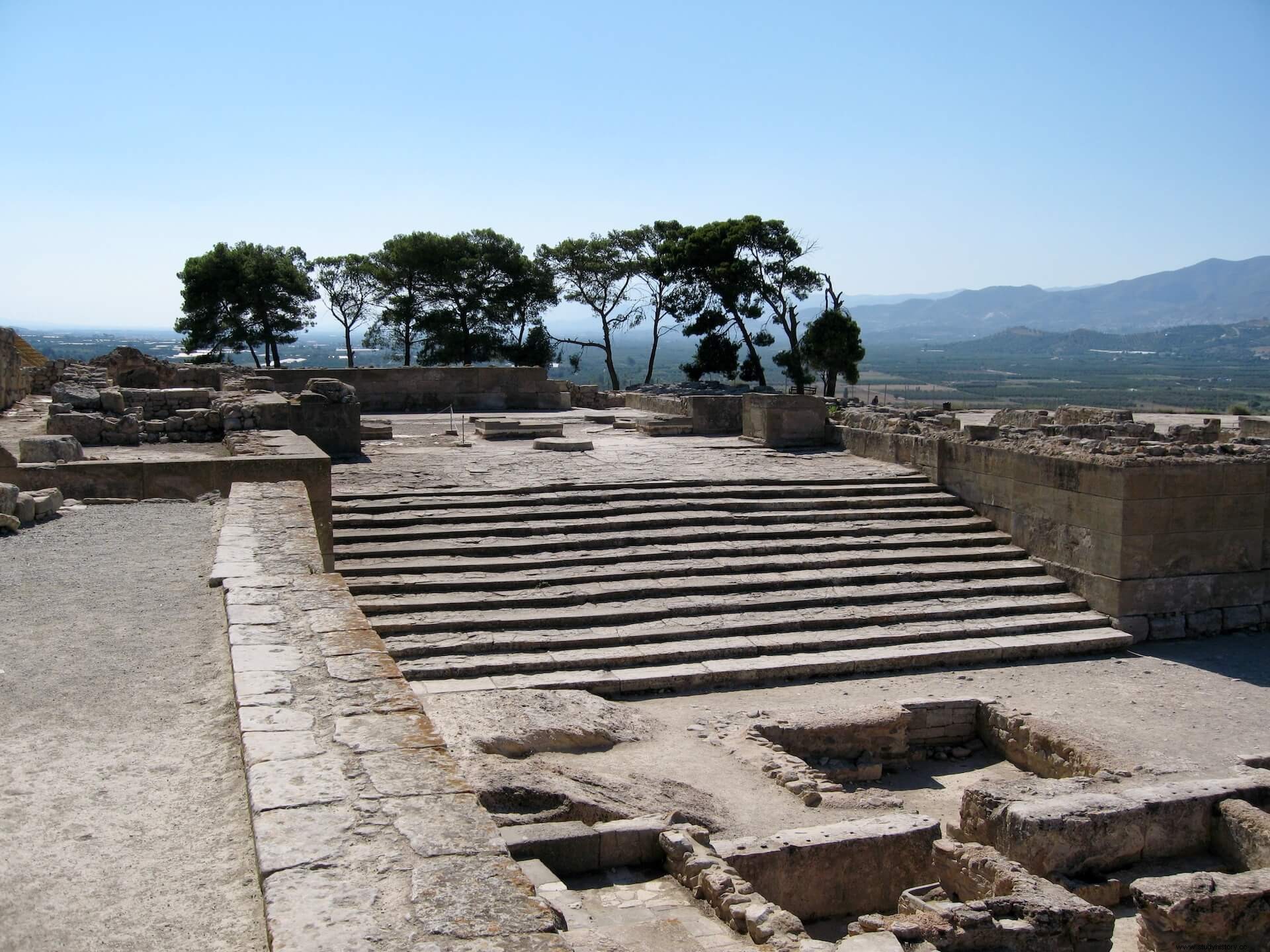
But in addition to the main entrance to the palace, in Up to five more entrances opened up from the same façade, all of them much smaller and leading to smaller rooms, almost tiny and intricate, and probably quite dark inside. Communication between the different sectors is complex, and it is rare that more than three rooms communicate with each other. This is a characteristic fact of Minoan monumental architecture, which is reminiscent (or so Arthur Evans would have it in the case of Knossos) of the labyrinthine structure of the minotaur myth .
After a long occupation, the first palace was destroyed by a succession of earthquakes at the end of the Middle Minoan IIB (ca. 1750 BC C.), and although there were later attempts to rebuild it (perhaps with a partial occupation of some spaces), it was not until a century later that the so-called "second palace" was built on the ruins of the previous one. In this phase, the façade is rectified and some of the classic spaces of Minoan palaces are structured, such as the warehouses, located in the western wing, the lustral baths , the residential areas or the so-called Minoan rooms, equipped with pillars. In addition, a large monumental entrance and a fourth patio on the east side are added to the architectural project, although all for a short time. Most of the materials are already related to cult activities, and on the other hand there seem to be serious gaps in terms of the material record of an administrative nature.
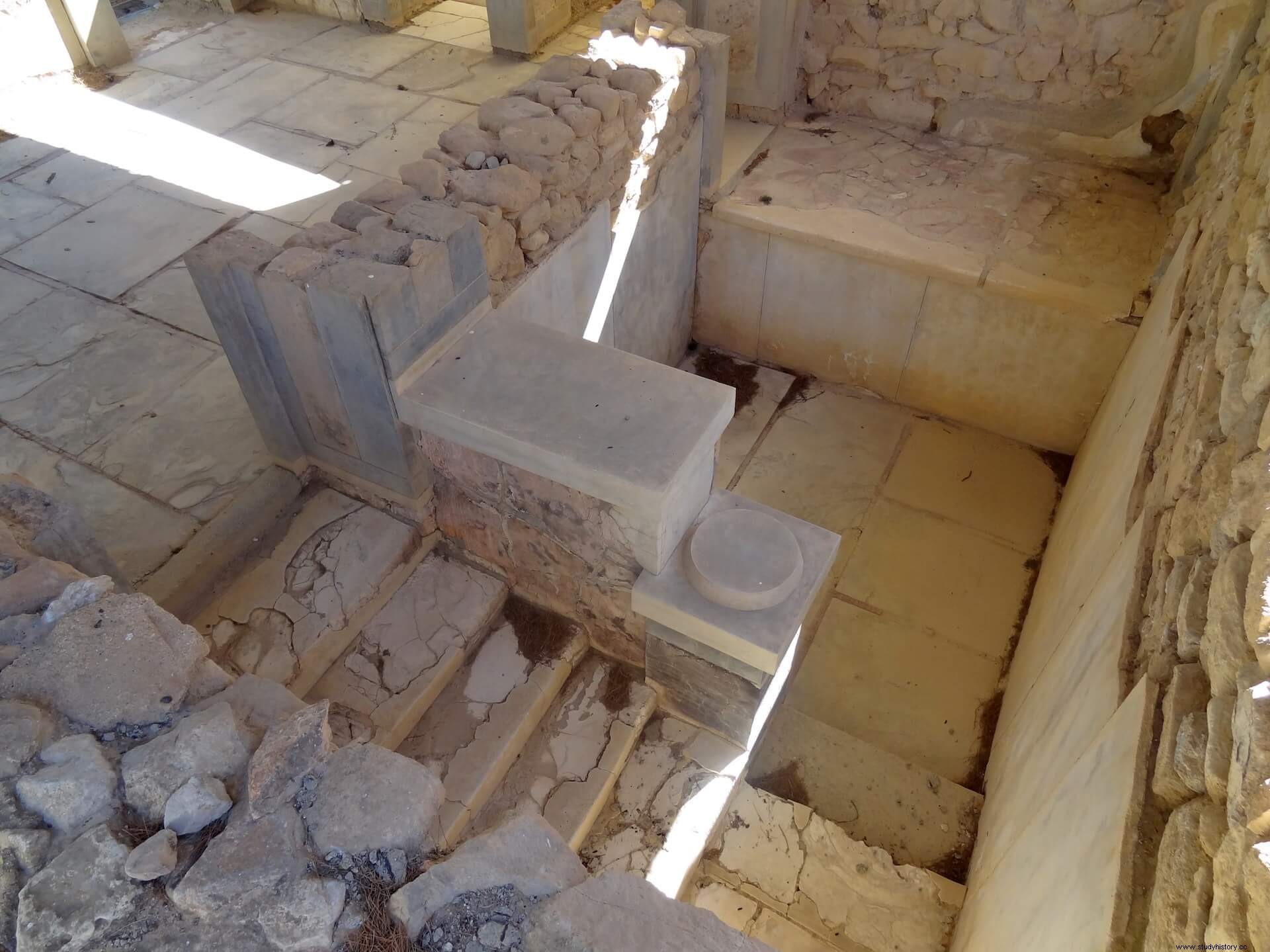
Be that as it may, in little more than a century , the palace is burned to the ground, never to be rebuilt again. We do not know what happened, although some researchers believe, based on the comparison of the levels of destruction of Festo and Hagia Triada, that the political rehabilitation project of the palace was not completed because the capital of the region was displaced to this neighboring town. . Perhaps the key, therefore, lies in the process of social differentiation of local elites, perhaps with a greater sign of religiosity in the case of Festus and a growing economic control in Hagia Triada.
